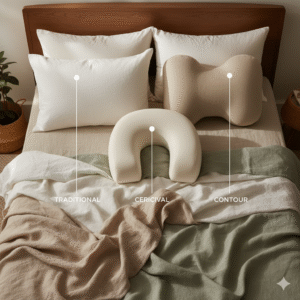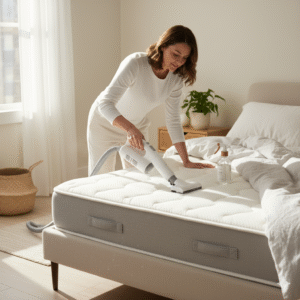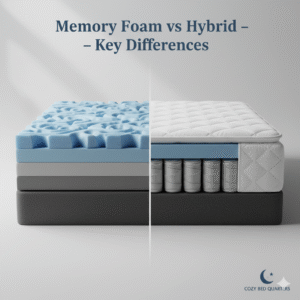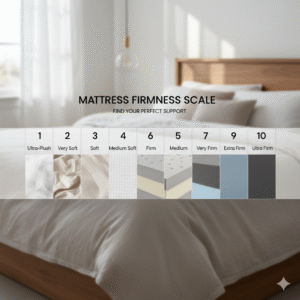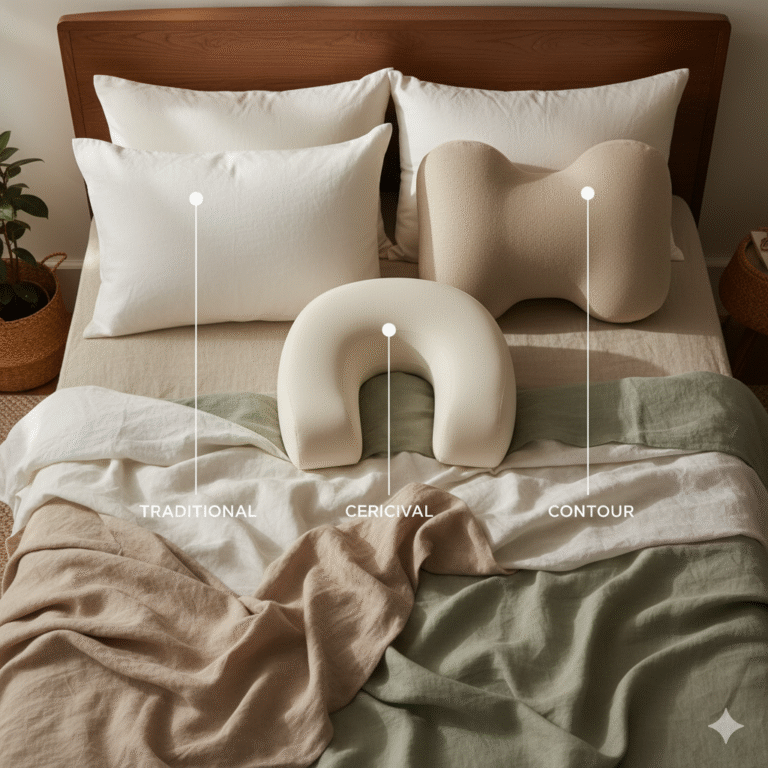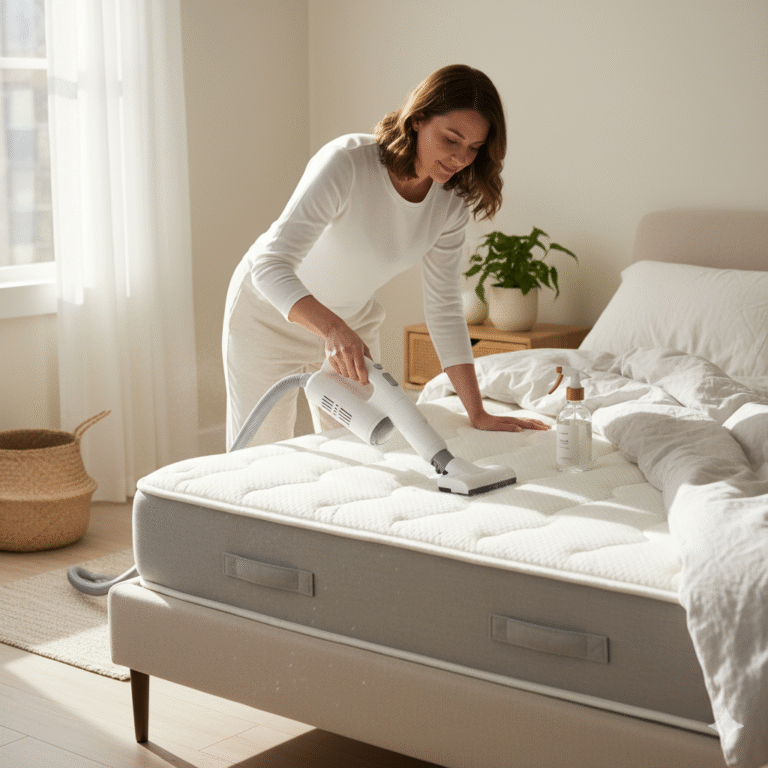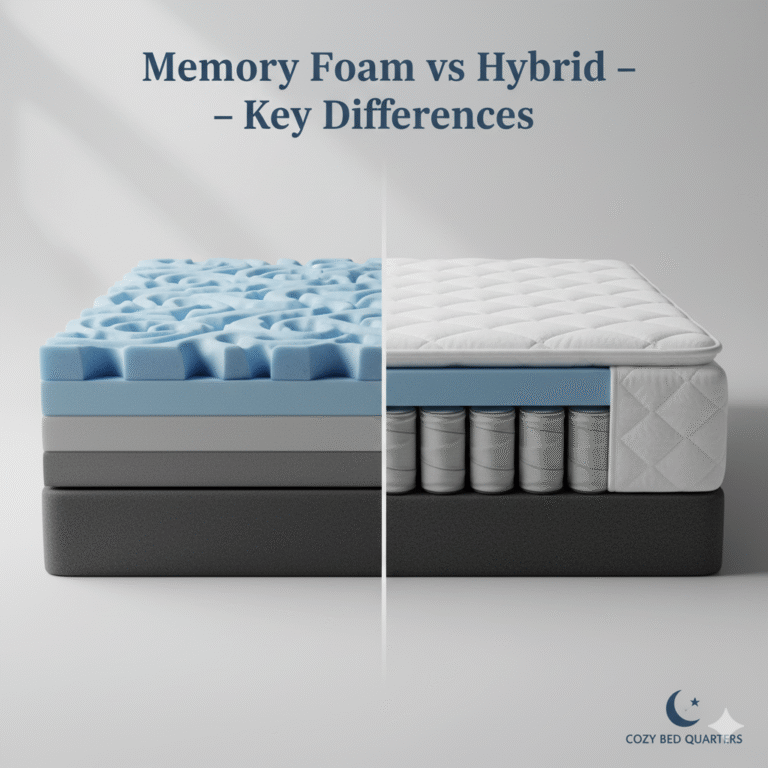How to Wash Pillows
Let’s make laundry day a little kinder to your sleep. When you know how to wash pillows the right way, they stay fluffy, clean, and supportive—without damp smells or clumps. Below, you’ll find simple steps (and friendly pro tips) to keep every pillow in your home fresh and ready for lights-out.
Why Pillow Hygiene Matters
Quick answer: Clean pillows help you breathe easier, sleep better, and wake up feeling fresher—because they’re not hiding dust, oils, and allergens.
Key takeaways:
- Regular washing reduces dust mites and odor-causing buildup.
- Fresh pillows support clearer skin and calmer sinuses.
- Good care extends pillow life and comfort.
- A core step in how to wash pillows is drying them completely to prevent mildew.
Night after night, pillows quietly collect sweat, skin cells, and oils. Over time, that cozy cloud can start to feel… not so fresh. A consistent cleaning rhythm clears out the gunk, supports easier breathing, and helps your pillows keep their bounce.
Want your whole bedroom to feel calmer? Build the vibe with our serene bedroom sanctuary guide.

Freshly cleaned pillows set the tone for deeper, more restful sleep.
Read the Care Label Before Washing
Quick answer: The care tag tells you exactly what your pillow can handle—machine wash, hand clean, or spot clean only.
Key takeaways:
- Labels indicate water temperature, cycle, and drying method.
- Down/alt-down pillows often machine wash; foam and latex do not.
- Remove cases/protectors and check seams for tears first.
- When in doubt, follow the gentlest listed option.
Not all pillows can take a spin. Down and many synthetic fills usually love a gentle cycle, while memory foam and latex prefer surface care only. Give zippers and seams a quick check so nothing bursts mid-cycle.
For material pros and cons, skim our side-by-side comparison: down vs. memory foam pillows. For general washing cadence across bedding, the Sleep Foundation’s guidance is a helpful benchmark.

Double-checking the care label saves your pillow from avoidable wear and tear.
How to Wash Down or Synthetic Pillows
Quick answer: Use warm water, a gentle cycle, and mild detergent—wash two pillows at once to balance the drum and dry low with dryer balls.
Key takeaways:
- Gentle cycle + mild liquid detergent = safe clean.
- Rinse twice if needed to remove soapy residue.
- Dry on low with dryer balls/clean tennis balls to restore loft.
- Avoid bleach and fabric softener (they can damage fill and shell).
Load two pillows to keep the washer balanced. Choose warm water and a gentle or delicate cycle. A mild liquid detergent disperses more evenly than powder and helps prevent residue. If the pillows feel slick after the first rinse, add a second rinse to clear it all out.
In the dryer, keep heat low and add dryer balls to break up clumps. Pause once or twice to hand-fluff and check for damp spots at the center. Patience here keeps feathers/fibers happy and springy.
Leveling up your sleep setup? See how investing in quality bedding upgrades nightly comfort.

Two-at-a-time keeps your washer balanced and your pillows evenly cleaned.
How to Wash Memory Foam and Latex Pillows
Quick answer: Don’t submerge foam or latex—vacuum to de-dust, spot clean stains with a lightly damp cloth, and let the pillow air-dry completely.
Key takeaways:
- Never machine wash or soak foam/latex.
- Vacuum with an upholstery tool on both sides.
- Blot—not scrub—stains with mild detergent solution.
- Air-dry fully away from direct heat or harsh sun.
Foam behaves like a sponge—soaking invites mildew. Instead, vacuum gently to lift dust. For stains, mix a drop of mild detergent into warm water, dampen a clean cloth, and blot. Finish by blotting with plain water to remove soap, then let the pillow dry in a breezy spot.
Need help choosing the right support for your neck and shoulders? Explore our guide to pillows for neck pain.

Blot—don’t scrub—so foam keeps its structure and support.
Drying, Fluffing, and Deodorizing Your Pillows
Quick answer: Dry pillows thoroughly on low heat and use dryer balls for loft; sprinkle baking soda before vacuuming to nix stubborn odors.
Key takeaways:
- Dry completely to avoid hidden moisture and mildew.
- Use dryer balls or tennis balls to restore loft and reduce clumps.
- Baking soda + vacuum = easy deodorizing.
- Sunshine helps naturally refresh fabric (when weather allows).
Moisture is the enemy of freshness. After washing, run low heat and allow extra time for thicker pillows. If the center still feels cool or damp, keep going—mildew hides in the middle. For a quick refresh between washes, dust on baking soda, wait 30 minutes, and vacuum thoroughly.
Run warm sunlight and fresh air to your advantage on a clear day—just avoid baking foam or delicate shells in direct, harsh rays for hours.
If you run warm at night, these cooling pillow picks can make your setup feel drier and breezier.

Low heat, longer time, and dryer balls: the trio that keeps pillows cloud-soft.
How Often to Wash and When to Replace
Quick answer: Wash most pillows every 3–6 months; replace every 1–2 years—or sooner if they’re lumpy, flat, or stained.
Key takeaways:
- Twice-yearly washing is a solid baseline; quarterly for allergy sufferers.
- Replace every 1–2 years (earlier if support fades or odors linger).
- Fail the “fold test”? If it doesn’t bounce back, it’s time.
- Routine care extends usable life and comfort.
Give your pillow the quick fold test: fold it in half and release. If it doesn’t spring back, it’s likely done. Stubborn odors and set-in stains are also clues. When you’re ready to upgrade, use what you’ve learned here to keep the next set fresher for longer.
To keep quality in focus as you refresh bedding, read the importance of quality bedding. For detailed laundering steps by fill type, Better Homes & Gardens has a handy overview: how to wash pillows.

When pillows won’t bounce back, your neck and shoulders notice—swap them out.
Key Takeaways: How to Wash Pillows
- Wash most down/alt-down pillows every 3–6 months with mild detergent on a gentle cycle.
- Never machine wash memory foam or latex; vacuum and spot clean only.
- Dry completely (low heat + dryer balls) to prevent mildew and odor.
- Read care labels first so each pillow gets the right treatment.
- Refreshing your routine for how to wash pillows extends comfort and lifespan.
FAQ
- Can I put pillows in the washing machine?
- Most down and synthetic pillows can. Use warm water, a gentle cycle, and mild detergent. Wash two at a time to balance the drum.
- How do I dry pillows thoroughly?
- Low heat, extra time, and dryer balls. Pause to hand-fluff and check the center. If it’s cool or damp, keep drying.
- My pillow smells musty after washing—what now?
- It’s likely still damp inside. Run another low-heat cycle or air-dry in a breezy, sunny spot. Sprinkle baking soda and vacuum if odor lingers.
- Is bleach okay for yellowed pillows?
- Skip it—bleach can weaken fibers and damage fill. Use a mild detergent and consider an oxygen-based booster on the shell (if the care label allows).
- How often should allergy sufferers wash pillows?
- Every 2–3 months is a helpful rhythm. Vacuum and sun-air pillows between washes to reduce allergens.
Final Thoughts
When you dial in how to wash pillows, bedtime feels noticeably fresher: fewer sneezes, more loft, and a cleaner start to every night. Small, consistent care pays off with cozier sleep—no complicated routines required.








